Barrel bedding is an often hotly debated subject, with strong opinions for the virtues of free floating and equally good cases made for partial and full-length bedding. Based on the ongoing controversy, it is with certain reservations that I share a few thoughts and experiences.

I am not prejudiced toward any one method, as I use different approaches depending on application and stock material. While there are autoloading, single-shot and even lever-action rifles that feature (or can be customized with) free-floating and full-length bedded barrels, my comments here are directed primarily at bolt-action sporting rifles.
During the early days of sporting bolt rifles with “standard” weight barrels, practically all were fulllength bedded with the barrel touching the stock wood. During this era, it would have been considered poor workmanship if the wood-to-metal fit was not respectably tight. Many of these vintage rifles actually shot very well. However, some small rifle producers, custom gunsmiths and target shooters began to recognize the virtues of free-floating barrels.
As World War II passed, inflation, labor and manu facturing costs rose sharply, which resulted in many major U.S. manufacturers fitting wood stock barrel channels with greater tolerances to help keep costs in check. In other words, the barrel was mostly free floating. Manufacturers retained a small pressure point inside the forearm tip. Its purpose was to help control and reduce barrel vibration.
The above method was widely common and appeared with many of the Remington Model 721, 722 and 725 rifles as well as the Model 700 when it first appeared in 1962. Most early Weatherby rifles – typically built on Mauser ’98, 1903 Springfield and Model 70 actions – were essentially custom rifles with full-length bedded barrels. When the Mark V rifle appeared in 1959, however, it soon shared a similar stock/barrel relationship as the Remingtons. Winchester Model 70 standard weight rifles produced from 1936 through 1963 were full-length bedded but also featured a forearm screw that firmly secured the forearm and barrel together to reduce barrel vibration.
This story is from the September - October 2018 edition of Rifle.
Start your 7-day Magzter GOLD free trial to access thousands of curated premium stories, and 9,000+ magazines and newspapers.
Already a subscriber ? Sign In
This story is from the September - October 2018 edition of Rifle.
Start your 7-day Magzter GOLD free trial to access thousands of curated premium stories, and 9,000+ magazines and newspapers.
Already a subscriber? Sign In
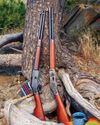
CIMARRON .32-20 Short Rifle & Carbine
In the heyday of Winchester Repeating Arms Company lever guns, it offered muskets, standard rifles, short rifles and saddle ring carbines.
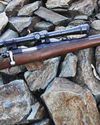
Remington's Model 722 and .222 Cartridge
It's easy enough to define what a varmint is, those pesky critters that tear up pastures, flower beds and all kinds of expensive crops people need for various reasons - most importantly, to make a living and/or something with which to feed themselves.

Coyote Bullets
What is Best for You?
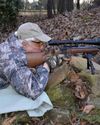
Remington's 5mm Rimfire Magnum
Shooting a Classic
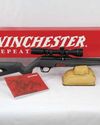
Winchester's New Wildcat
The Ultralight Rimfire Varmint Rifle

.223 Remington from .30-30 Winchester?
Multitasking for Varmints

LOADS FOR A .22 TCM
The .22 TCM first appeared commercially in 2012, chambered in a Rock Island Armory 1911-style handgun.
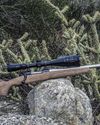
Everybody Loves Velocity
The 4,500-fps WSSM Project

A BOLT-ACTION FRANCHI 224 VALKYRIE
Testing New Loads
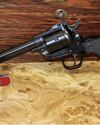
.22 Winchester Magnum Rimfire
Shooting Revolvers